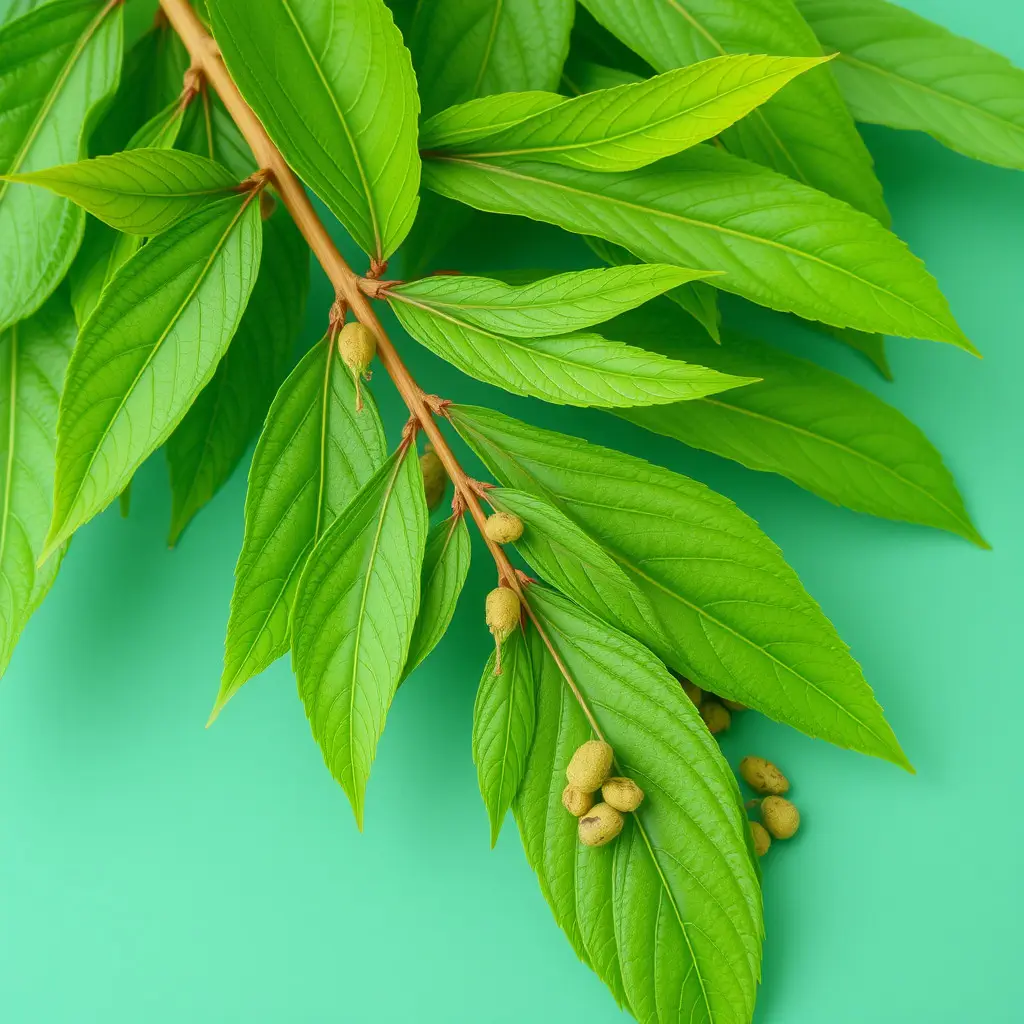Kratom, a plant from Southeast Asia, has gained attention as a natural alternative for chronic pain and stress relief. Its primary active compounds, mitragynine and 7-hydroxymitragynine, are known for their analgesic properties and can provide pain relief without the risks of dependence typically associated with opioid painkillers. The alkaloids in kratom leaves interact with the brain's opioid receptors to potentially alleviate chronic pain and inflammation. Additionally, kratom may influence the body's stress response systems, contributing to a sense of calm and well-being, and is often reported to help mitigate anxiety and tension by impacting mood-regulating neurotransmitters. Users should consume kratom responsibly, adhering to recommended dosages and consulting healthcare professionals for safe and effective use, especially when combined with other treatments or for those with health concerns. Kratom strains like Maeng Da are known for their strong pain-relieving properties without causing drowsiness, while Bali kratom is recognized for its sedative effects, aiding in sleep and anxiety relief. The choice of strain and dosage should be personalized, with careful attention to safety, quality, and legal considerations to maximize the benefits of chronic pain management and stress relief through kratom use.
Exploring the complex relationship between mental well-being and physical health, this article delves into how kratom supplements can play a pivotal role in both managing chronic pain and alleviating stress and anxiety. We will navigate through various kratom strains to uncover their unique effects on mental clarity and pain reduction, offering insights for safe and effective usage within your wellness routine. This exploration aims to provide a comprehensive understanding of kratom’s potential in the realm of chronic pain management with kratom and its broader implications for stress relief, enhancing your quality of life.
- Exploring Kratom's Role in Chronic Pain Management and Stress Relief
- Understanding Kratom Strains and Their Impact on Anxiety and Pain Reduction
- Safe Usage and Considerations for Incorporating Kratom into Your Wellness Routine
Exploring Kratom's Role in Chronic Pain Management and Stress Relief

Kratom, a plant from Southeast Asia, has garnered attention in natural medicine circles for its potential role in chronic pain management and stress relief. The primary active components in kratom are mitragynine and 7-hydroxymitragynine, which have been studied for their analgesic properties. For individuals grappling with persistent pain, kratom supplements offer a natural alternative to traditional pharmaceuticals, providing relief without the risk of dependence or severe side effects often associated with opioid painkillers. The alkaloids present in kratom leaves interact with the brain’s opioid receptors, which can help alleviate pain signals and reduce inflammation. Beyond its analgesic effects, kratom is also believed to modulate the body’s stress response systems, particularly the hypothalamic-pituitary-adrenal (HPA) axis. This modulation can lead to a sense of calm and well-being, making it a valuable tool for those looking to manage both chronic pain and the associated stress. Users report that kratom helps them cope with anxiety and tension, potentially due to its influence on neurotransmitters like serotonin and dopamine, which are crucial to mood regulation. As with any supplement, it is essential to approach kratom use responsibly, following recommended dosages and consulting healthcare professionals to ensure safety and efficacy, especially when used in conjunction with other medications or for individuals with pre-existing health conditions.
Understanding Kratom Strains and Their Impact on Anxiety and Pain Reduction

Kratom, a tropical tree native to Southeast Asia, has gained attention for its potential in managing chronic pain and alleviating anxiety. The plant’s leaves contain various alkaloids, with mitragynine and 7-hydroxymitragynine being the most prevalent. These compounds interact with the body’s opioid receptors, providing both pain-relieving and mood-enhancing effects. When it comes to selecting kratom strains for anxiety and pain management, understanding the nuanced differences between them is crucial.
There are several kratom strains, each associated with different effects based on the alkaloid profile present in the leaf vein color. For instance, Maeng Da kratom is renowned for its potent analgesic properties and is often favored by individuals seeking relief from chronic pain. It also has a stimulating effect that can uplift mood and reduce feelings of anxiety without causing drowsiness, making it a versatile choice for those looking to maintain productivity while managing their condition. Another strain, Bali kratom, is known for its sedating effects, which can be beneficial for individuals experiencing severe anxiety or insomnia. It’s important to note the unique impact each strain may have, as personal experiences with kratom can vary greatly from person to person. Therefore, experimenting with different strains under professional guidance can lead to a tailored approach to pain and anxiety management with kratom, enhancing one’s quality of life in a safe and informed manner.
Safe Usage and Considerations for Incorporating Kratom into Your Wellness Routine

Incorporating kratom into a wellness routine for stress and anxiety relief can be beneficial, particularly when considering its potential for chronic pain management. It’s crucial to approach kratom use responsibly, as it is a potent supplement that interacts with the body’s opioid receptors. For individuals exploring kratom as part of their wellness regimen, safe usage is paramount. This includes starting with a low dose to gauge individual sensitivity and gradually increasing the dosage as needed. It’s important to source high-quality kratom from reputable vendors to avoid contaminants or adulterated products. Additionally, adhering to the recommended guidelines and maintaining regular consultations with healthcare providers can ensure that kratom is used safely and effectively for stress management while also aiding in chronic pain management.
When integrating kratom into your daily routine, consider factors such as timing of intake, potential interactions with other medications, and personal health conditions. The effects of kratom can vary depending on the strain, dosage, and individual physiology, so consistent monitoring of its impact on your well-being is necessary. Furthermore, it’s essential to be mindful of the legal status of kratom in your region, as its availability may differ by jurisdiction. By understanding these considerations, individuals can make informed decisions that support their mental and physical health while leveraging kratom’s potential benefits for chronic pain management and stress relief.
In conclusion, the therapeutic potential of kratom in managing chronic pain and alleviating stress-related anxiety presents a promising avenue for those seeking alternative methods to improve their well-being. The article has delved into the nuanced effects of various kratom strains and offered guidance on integrating this supplement responsibly into a holistic health regimen. It is clear that, while not without its complexities, kratom may serve as a valuable tool in the broader context of pain management and stress relief. However, users must approach its use with caution, adhering to safe dosage and frequency guidelines to mitigate potential risks. As research continues to evolve, it is hoped that a deeper understanding of kratom’s mechanisms will inform more effective and regulated practices for those in need of its benefits.






